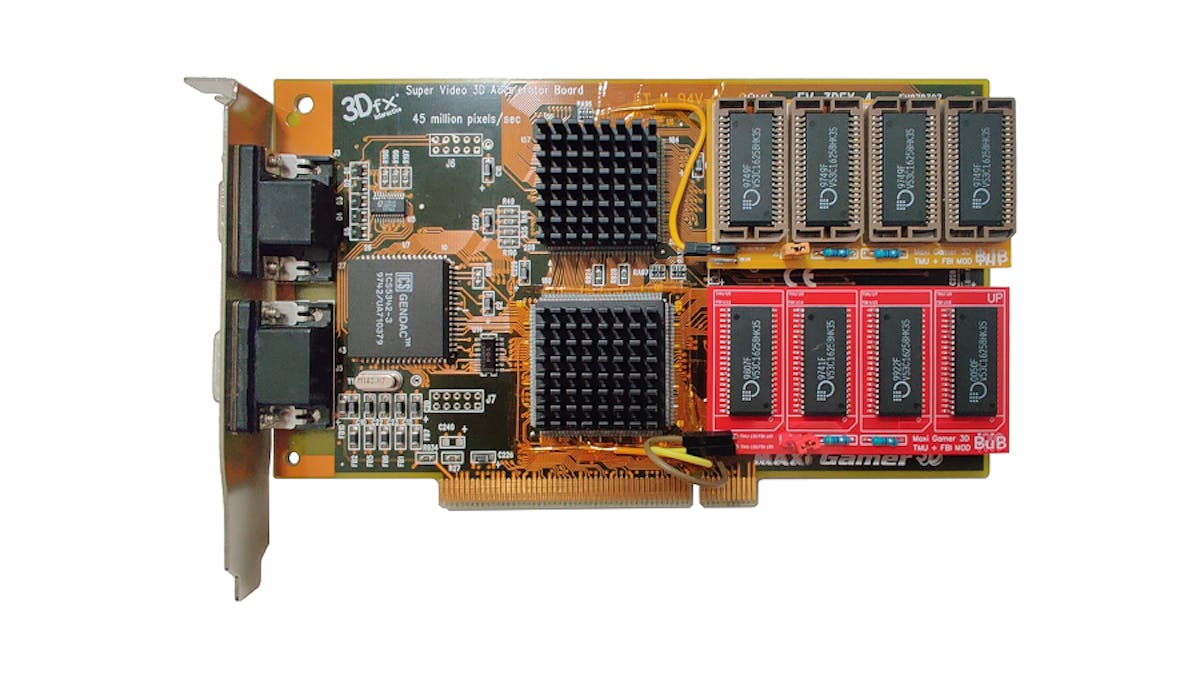Bits und Bolts' Piggyback PCBs Bring the 1995 3dfx Voodoo Accelerator Up to an Impressive 8MB VRAM
Requiring a minimum of modification to the original hardware, these PCBs double the RAM on the board — though with little performance gain.

Pseudonymous YouTuber "Bits und Bolts," hereafter simply "Bolts," has designed a piggyback board which brings the 3dfx Voodoo 3D accelerator card, a staple of '90s gaming, to the heady heights of 8MB of RAM — double the amount it originally featured.
Released in 1995, the 3dfx Voodoo accelerator and its Glide application programming interface (API) brought speedy smooth 3D gaming to the masses — or, at least, those who could afford the add-in boards which hit the market based on the company's chips.
The original Voodoo was unusual by modern standards by dint of being exclusively for 3D graphics — using a relay-based pass-through system to take over the video signal completely when running a Glide-supported game but otherwise deactivating and handing over 2D or non-Glide 3D work to the system's stock graphics chip.
While later Voodoo models would come with additional video memory, the majority of original Voodoo cards came with only 4MB despite the 3dfx Voodoo chip itself being able to support up to 8MB. It's this support which has given rise to after-market RAM mods, typically carried out by double-stacking RAM chips — something Bolts decided was an ugly approach.
"When I looked at the layout of how the memory ICs were aligned I got an idea [of] how to upgrade my card without messing up the original memory chips. [These] PCBs are used to clip on the Guillemot MAXI Gamer 3D Voodoo Graphics Accelerator," Bolts explains of his open-hardware alternative. "Usual memory size for those cards were 4MB. With the help of the PCBs, you can get the Voodoo up to 8MB."
While the PCBs Bolts has designed work in effectively the same way as soldering second memory chips on top of the originals, they're designed to be as protective of the original hardware as possible. They're not just plug-and-play, however: upgrading the texture memory requires the soldering of a single wire, while upgrading the second memory bank to increase the maximum supported resolution from 640×480 to 800×600 requires another two wires to be soldered.
There's also, arguably, little point beyond bragging rights: in the 3DMark '99 benchmark Bolts found that the performance of cards modded to 6MB or 8MB were barely higher than the stock 4MB version, while operation at 800×600 barely reached double-digit frame rates in both benchmarks and period-appropriate games like Id Software's Quake and Eidos' Tomb Raider.
For those who want to try anyway, and who have the exact same third-party 3dfx Voodoo board, Bolts has released design files and Gerbers for the memory mod boards on GitHub under an unspecified open source license.
Freelance journalist, technical author, hacker, tinkerer, erstwhile sysadmin. For hire: freelance@halfacree.co.uk.




